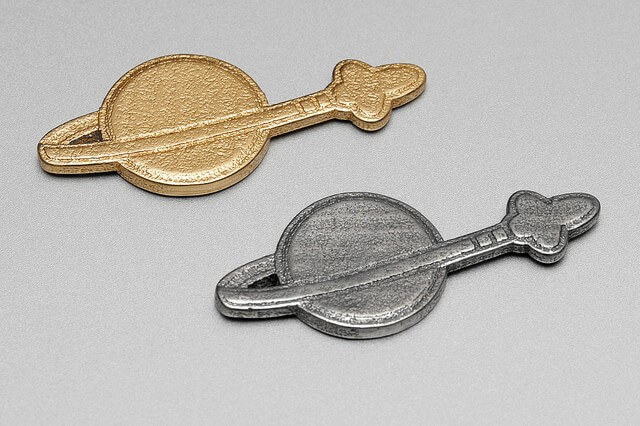
If you want to rehabilitate old gold plated jewelry, preserve a memory, or create a keepsake from a natural object, a gold plating machine is an excellent option. At about the cost of a sewing machine, these simple and affordable devices can pay for themselves over time just as easily as other household appliances, and it’s always a delight to watch the surfaces of objects transform from their usual appearance to glistening brilliance in a matter of minutes.
Gold plating machines work by allowing for a thin film of gold to be deposited onto the charged surface of an object. The gold is contained within a liquid solution, which is either brushed over the object or serves as a bath; the unused portion of which can be reused for later projects. Although the method is easy and may be completed within little more than the amount of time it would take to paint the object, care must be taken to set up the machine correctly and to ensure that the object is properly prepared.
In order for gold plating to work on an object, its surface must be smooth (polished if necessary) and able to conduct an electric current (it must be a metal which has been properly cleaned and stripped in order to remove any residue, and possibly activated with a special cleaner that removes an oxide layer that may have built up on materials such as stainless steel and nickel containing alloys). Nonmetal and organic objects must be coated with a conductive coat, such as a silver and nickel alloy based paint, and allowed to dry thoroughly so as to create a conductive surface. This coating process is also known as electroforming, and can be done over the entire object or just in selected areas, such as a rim around a slice of nonmetal rock.
Gold plating requires a direct current, and gold plating machines are basically a power supply that converts standard AC into waves of DC current, so that they may be plugged into a standard outlet. The more expensive the machine; the smoother the DC current and the lower the risk of irregularities. The other essential components include a common lead with an alligator clip that will provide the current onto the object, and a brush (or anode wrapped in cotton or wool).Once the surface has been prepared and the object clamped, the machine should be set to the appropriate voltage; usually between three and six volts. The brush/anode may now be dipped into the gold solution and painted onto the object. The voltage should be turned down if the gold starts to look dark, and if the current is too high it may cause pitting. However, if the voltage is set too low, the plating will appear dull. Most manufacturers of gold plating machines offer customer service, and it would be wise to seek their assistance when beginning this hobby or working with new sizes or new materials.
